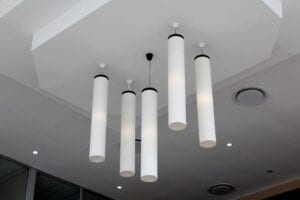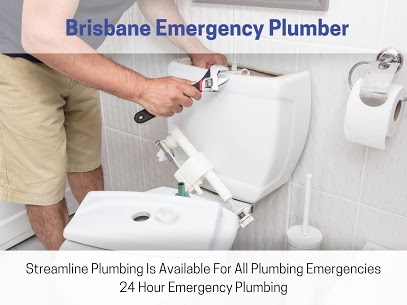Friday, August 20, 2021
Saturday, July 17, 2021
Paint Colours For A Hampton Style Home
Brisbane Painting Pros
(07) 3064 0625
17 Pleasant Crt
https://www.brisbanepaintingpros.com.au/
Choosing a paint theme for a Coastal or Hamptons style home is not something to be nervous about.
It is a current styling trend with many inspiration guides and colour choices, so you can choose a colour scheme that you love!

Adding your favourite colours can easily be done with soft furnishings, so the biggest decision you have to make is what the wall colour will be to plan what soft furnishing colours and textures you can add to create the layers in the room.
Long gone are the stark, minimalist traits of the late '90s and early 2000's Coastal or Hamptons styling does bring in the same elements of choosing simple colour choices, but they allow layers of the texture of soft furnishing and statement pieces.
It is no longer "white on white."
Are you planning on painting your home with a crisp white paint?
When you initially think about what colours to use for your home, you realise that choosing "white paint" is not as easy as it sounds.
What colour should you paint your walls depending on the type and shade of wood in your room?
The answer is surprisingly complex, but it does hinge on one feature in a home: the timber finishes and flooring in a home.
Many homes in Brisbane have timber or timber look flooring and choosing a shade that tones in with your flooring is the key thing to do.
Cooler Tones To Paint Your Walls
From a warm white to a cooler, green and grey tints, many different tones work well with various timbers!
Warmer whites tend to blend more seamlessly with the warmer timbers, but again, the complementary cool green tint also works if it's not too grey timber you could use for an even fresher look.
When using Warm whites, be aware that they can make your room seem smaller than it is, so if space isn't an issue, go ahead and choose a warmer colour.
Adding more grey to a modernised white can give your space that new look you're after.
Beiges are typically a cool neutral colour with an orange undertone. However, those who want to balance out this cold tone can go opposite the wheel and find warmer colours with hints of green in them, like peach or coral, for more warmth without being too overpowering.
Love the colour blue?
Light blue is a popular choice for timber as it blends in well.
However, if you have darker or more red timbers, consider using purple undertones like grey to blend the colours.
Paint Colours For Your Walls
To start getting your paint inspiration, head into your nearest paint store to pick up whites and neutrals' current colour swatches.
Make sure you know what your flooring is or have a sample of it to take in with you so you can quickly choose the shades that will work in with your flooring.
After narrowing down a few favourites, take sample pots home and paint them up on different surfaces of your room!
This will ensure you get the right hue for every space.
Make sure it's painted with two coats, and you allow them to dry completely before you start comparing the colours.
We also suggest painting the sample paint up next to the cornices and skirting boards so that you can see the difference in the colour tone when it up against a crip white painted trim.
Also, look at the painted areas at different times of the day with different lights. Natural light and artificial lights will bring out different tones in the paint.
Now that you have selected your paint choice, you can get started with booking a Brisbane painter or trying and doing the work yourself.
Friday, July 16, 2021
What Patio Furniture To Buy
Local Deck Builder
(07) 3667 8081
2/25 Smith St Capalaba Qld 4157
https://local-deck-builders.business.site/
https://www.localdeckbuilders.com.au/
Top 5 Things to Consider When Buying New Patio Furniture
If you're in the market for new patio furniture, you'll want to keep these five things in mind:
The durability of the furniture The weather conditions where the furniture will be used The material the furniture is made of
The material the furniture is made of
The color of the furniture
The color of the furniture
Whether or not you want to stain the furniture or use paint
You'll also want to take care of your patio
Good deck furniture will bring comfort and function to your outdoor space. For example, outfitting a porch with a wicker sofa and a classic rocking chair, both with soft cushions, can quickly turn it into a second family room during the warmer months.
Complemented with the right furniture, even small spaces like balconies and small gardens will be a perfect place to sit outside
Use these tips to select for your area the best deck furniture.
Thoughtful planning will help you make your backyard your new favourite place to lounge, eat and entertain.
First and foremost, you need to consider your budget.
You will be required to factor in the amount of money you are willing to spend on buying furniture for your outdoor area.
Therefore, after getting a budget and looking at the kinds of products available in the market, you will now need to consider the styles and patterns.
What should the outdoor furniture be made of?
Should I choose synthetic wicker or timber
What colours should I choose?
Natural shades of wood, or bright vivid colours? What style should my outdoor furniture be?
Would a certain period of furniture help to compliment my indoor furnishings?
Saturday, May 1, 2021
Lighting Advice By A Brisbane Electrician
Brissy Electricians
07 3064 0615
https://www.google.com/maps?cid=6313249186299793165
https://www.google.com/maps?cid=7647260293837196196
Choosing interior lighting options for your home could seem like an easy thing to do.
Have you ever been to a lighting showroom and seen the thousands of options?
When faced with all the different lighting options, you need to understand a little bit about what you need for your home so you do not end up with a space that is not suitable for the purpose you had planned.
The Goal Of Lighting Any Room Is To Make It Suitable For Its Planned Use.
So before you begin, you need to ask yourself the question:
What are you using the space for, or what will you be doing?
Think about how you will use the room throughout the day and let the lighting work for you.
Since living rooms tend to have various uses, add different lighting options in your living room and make it easy to control the light levels.
Understanding the basic types of lighting and how and when to layer them is the most important aspect of lighting your home.
There are three basic lighting types that you should keep in mind:
Ambient or General lighting
Task lighting
Accent lighting
Ambient or General Lighting
Ambient lighting is the general level of light in a room.
It provides general illumination to a room and allows you to move and see safely.
It is usually created by the first light switch you turn on when you enter a room, and it’s the light that is left on most of the time. It is the perfect place to use energy-efficient LED bulbs
It is the foundation for all interior lighting.
Although you can use individual fixtures such as floor lamps or table lamps, ambient light is typically created with overhead fixtures, such as:
- Recessed lighting
- Track lighting
- Chandeliers
- Ceiling fans
- Area lights
When choosing light bulbs for your room lighting, think in terms of lumens, not watts.
Oldstyle bulbs measure the brightness in watts, which is actually a measure of energy consumption.
With the wide usage of energy-efficient bulbs like CFLs and LEDs, lumens are a more accurate brightness measure.
Choosing The Right Lights For Your Space
Suspended Lighting or Pendant lighting is ideal for higher ceilings or for hanging over islands or dining areas.
Ensure pendant lights are no lower than 75cm (30 inches) from a benchtop or table. They can block your view or be an obstruction.
When choosing pendant lights, consider the size of your space.
For smaller rooms, opt for smaller, lighter pendant lights.
Larger spaces can handle more significant and dramatic lighting fixtures.
If extra light is needed, you can add other light sources.
It Is OK To Choose Bulbs With A Lower Lumen Output
When it is for general lighting, the room lighting does not need to be as bright and focused as Task or Accent lighting.
Yourelectricianwill be able to help you calculate what lumen output you will need to light up a room.
A single light fitting maybe be sufficient with the correct lightbulb.
You can add extra light fittings or even go for recessed downlights for a more even spread of ambient lighting.
If you are considering recessed lighting, you should aim for approximately one fixture per 4 square feet of ceiling.
Task Lighting Adds Extra Light When Needed
Think about when you are doing an activity that requires extra light.
It can be reading in bed, food prep in the kitchen, craft activities or doing your makeup in the bathroom.
Task lighting is to help you do a task.
This type of lighting is localized and can come from various sources, such as spotlights, recessed lights or desk lamps and table lamps.
Consider These Tips For Task Lighting:
Brightness is crucial, but it shouldn’t illuminate the entire room.
Look for adjustability. Opt for fixtures and lamps that can be dimmed (or install a dimmer switch), as well as positionable fixtures such as movable arms that can be moved as needed.
Consider The Colour Of The Light.
Warmer bulbs are ideal for reading, especially at night. In comparison, cooler bulbs around your bathroom mirror will give you realistic daylight, so your makeup looks great in natural light.
Placement matters. Desk lamps and table lamps should be adjustable and pointed downward, so the light is focused on the task at hand and not in your eyes. They should also be placed on the side of your workstation to avoid glare and limit shadows.
Accent Lighting Or Feature Lighting
Where to use accent lighting
To draw attention to artwork or plants
To highlight architectural elements
As decorative lighting
Accent lighting, also known as directional lighting, aims to create a focal point.
Typically it is used to draw attention to a specific feature, such as a piece of art or a plant, or highlight architectural elements such as wall textures decorative coving.
Adequate accent lighting draws the eye to the desired feature without drawing attention to the type of lighting.
This is often accomplished with spotlights, wall sconces or recessed lighting.
To effectively attract attention, accent lighting should direct at least three times as much light to the focal point as to the rest of the room.
When it comes to accent lighting, it’s okay to focus on form rather than function.
Don’t forget about natural light.
Perhaps your room is brightly lit by natural light during the day, so you underestimate the amount of ambient light you need at night.
You can use dimmers to add more flexibility to your room’s lighting.
The Kitchen Lighting
The kitchen is the central hub of most homes and families.
We do more than just cook and eat in our kitchens, which means this space needs different lighting types.
A common mistake when planning kitchen lighting is is using a single light or a lighting track. It results in uneven light distribution, with glare and shadows on the countertop.
Flexible lighting is needed with the right placement of lights to help use the space functionality day and night.
Task and accent lighting help supplement natural light during the day and add general lighting in the evening hours.
The kitchen light is often left on longer than any other lights in the home. Upgrade your lights to energy-efficient bulbs like CFLs or LEDs. They emit less heat, which is perfect for under-cabinet and other Task lighting.
Task lighting provides focused illumination for a work area.
In the kitchen, this can include the following areas:
- Countertops
- Islands
- Sinks
- Stovetops
- Inside cabinets and drawers
- Under-cabinet lighting
Under-Cabinet Lighting
Is an effective way of creating task lighting and puts light where it’s needed most, without the risk of shadows.
Many surfaces, including granite and marble, are reflective.
Look for under-cabinet lighting that provides a diffused light source to avoid glare, such as LED strips positioned toward the wall.
Suspended Lighting
Pendant lights can be both decorative and functional in a kitchen.
They provide ambient light is distributed in all directions, and when properly positioned, these fixtures can also serve as stylish task lighting over spaces like your kitchen island or sink.
Recessed Lighting
Is excellent for low ceiling heights. If you choose recessed lighting, make sure the lights are close enough to the cabinets to provide a useful layer of light overhead where you will be working. If they are set back from the cabinets, there will be shadows on the benchtops.
Position the lights about 60cms from the walls so that the light beam’s centre hits the countertop’s edge.
Accent lighting
Accent lighting in your kitchen shows features such as artwork on the wall or a feature on a benchtop like a plant or a fruit bowl
There are several ways to add accent lighting to your kitchen:
LED light strips under a cupboard or even baseboard lighting
If you have high ceilings, pendant lights, or wall sconces above the sink, can provide both accent and task lighting.
The Living Room
The living room is where family members spend time.
It’s also usually one of the first rooms you enter. It needs to be well lit while keeping both function and form in mind.
The room lighting needs to support the activities you do (or want to do) while using the space.
If there is a TV in your living room, avoid placing ceiling lights directly above or in front of the TV,
Use accent lighting that you can dim or easily turn off.
The lights can be distracting by creating glare and making it difficult to see during dark scenes.
Ambient Light Ideas:
Use a large central ceiling light such as a stylish chandelier or pendant, If you use multiple light sources, make sure to distribute them evenly to avoid bright areas and harsh shadows.
Opaque lampshades and frosted glass diffusers can also help balance the lighting.
For entertaining, the proper ambient lighting is essential. Use warm-toned, dimmable bulbs to create an inviting environment that makes your guests feel comfortable and encourages conversation.
Task Lighting
Task lighting creates focused, bright light that allows you to easily see what you’re looking at while providing eye relief.
For avid readers or crafters, the right light allows you to focus on your activity and avoid eye strain.
Lamps that are adjustable for brightness and position are the most useful sources of task lighting.
Lamps with dimming options or 3-level dimming options are perfect.
Place task lights at desks, tables used for work or hobbies, and next to your favourite reading chair.
Accent Lighting
Accent lighting helps create more visual interest and highlight important aspects of your living room.
Highlight artwork, architectural details like textures or decorative mouldings.
Cabinets And Shelves:
Lighting open shelves or cabinets is a great way to feature the items you want to display, such as china, glassware or other decorative pieces.
Use fairy lights or LED strips in display cases and on bookshelves to subtly highlight a collection of items, or hang fairy lights around houseplants to create soft pockets of light and an enchanting atmosphere.
To help you plan the lighting of your home, speak to aqualified Brisbane electrician who is a lighting consultant and passionate about lighting design
The Article Interior Lighting Options For Your Home First Appeared ONhttps://www.google.com/maps?cid=6313249186299793165
: https://gqcentral.co.uk
Friday, April 30, 2021
Blocked drains Emergency Plumber
Streamline Plumbing Solutions
0416 421 566
Mount Cotton
Blocked drains can be classed as emergency plumbing so if you notice something amiss. Take action quickly.
It can take a while for a clog to build up and become obvious, but once a you have noticed something is wrong, it will get worse and quickly.
The backup of waste and water will often lead to unpleasant odors.
Typically, blockages occur in the narrower pipes of your home, such as sinks or toilets. However, debris can also build up in outdoor drains and cause a blockage.
By being aware of the common signs of a clogged drain to look out for, you can act quickly and fix the problem as soon as possible.
The signs
One of the most apparent signs of a clogged drain is when your toilet, shower, bathtub, or sink drains slowly. When a clog is nasty, the water may not drain at all.
With only one appliance having problems, the blockage is likely limited to a pipe connected to that particular appliance. If everything in the home looks to be affected, then the blockage will be outside in the gully trap or sewage pipes.
The toilet can help identify the extent of the problem – if flushing the toilet causes the water in the shower to rinse, or if running faucets causes the water in the toilet to rise, it is definitely a clogged drain.
So don’t forget to check the external drains and manhole covers on your property for signs of rising water – but only from the outside, as entering manholes is very risky due to the risk of gases and bacteria from the raw sewerage.
The Bad Smells
Foul odours are a clear indication of a block and can be one of the most apparent indicators of an underlying problem – if something has clogged the drain and started to rot, you’ll definitely notice it.
The foul odour can appear even before visible symptoms appear, so it’s important not to ignore unusual smells in the home that can’t be readily identified.
The Noises To Listen For
If your pipes and taps sound different than usual, it could be a sign of being blocked. Gurgling noises from drains, plug holes, toilet flushes and pipes are early warning signs – these sounds occur when air trapped in the pipes and being forced up through the system.
What To Do If You Suspect A Blockage
Each of the above signs is a cause for concern on its own, but if you notice two – or even all three – it’s time to address the problem head-on.
The first thing you should do is determine who is responsible for fixing the problem. Generally, you are only responsible for the parts of the system within your home’s boundaries and used exclusively by your home.
If a blockage is located within your property, you are responsible for clearing it.
However, if only part of the system is within the boundaries of your home and other parts are shared by neighbouring properties. The local water and sewer company is responsible.
With this knowledge, your next step should become clear.
If the blockage is somewhere outside your property, you simply need to report it to your water utility company.
On the other hand, you find evidence that the problem is within your property, then you should take direct action.
You can try unclogging the drain yourself, you can learn more about how to do so here.
However, if you’d rather talk to a plumber, you may need to contact an emergency plumber to clear it quickly
The Best Way To Unclog A Sink
Maintain your kitchen sinks and internalplumbingregularly to clear small clogs.
Small clogs when left will start to attract debris and slime until they become large clogs that block pipes completely.
If you’d rather use an eco-friendly product to keep your drains clear, you can ditch the caustic chemicals found in many caustic cleaners. Use baking soda ( bi carb soda) and vinegar instead.
Start by pouring boiling water down the drain, wait a few minutes, pour a cup of baking soda down the drain, and then add a cup of vinegar and another cup of hot water.
If the water is still running down the drain, slowly fill up the sink and place a plunger over the drain. Use the plunger carefully – if you push too hard, the pressure you create could break the seals on your pipes and cause a leak.
How To Clear A Blocked External Drains
A blocked external drain may seem like a big disaster, but it doesn’t have to be!. You can take steps to solve the problem and get your plumbing systems back up and running.
Need to know how to unclog an outdoor drain?
Step One: Assess the Problem
Get access to your outdoor drain by whatever method you can to open it. For most homes, this means removing the stormwater drain cover. You may need a screwdriver or crowbar to ease it open. Once you have access try and do a drain inspection.
Can you see a blockage on the surface or is it out of sight?
If you think you can handle the task yourself after assessing the problem yourself, proceed to step two. If the problem appears to be far more difficult than you expected, we recommend that you do not tackle the problem yourself and go to step six on this list.
You may also have clogged up gutters and downpipes that are easier to clean, although it’s still worth following the same steps.
Step two: get the right tools for the job.
The most important tool is a DIY drain snake or drain rod. They are long, thin, flexible and often have steel joints. The rod allows you to push through the clog in your drain and get deep into the external pipes. You can easily get them from a hardware store.
Do not bother to try and clear an exterior drain without one
You’ll also need protective clothing as you dig around in the drain. We recommend waterproof clothing – gloves and long sleeves – and protective clothing for your mouth and eyes.
Splashes can contain nasty sewage bacteria that you shouldn’t come into contact with, as they can cause illness or infection.
You’ll also need a bucket and a hose – ideally a pressure hose if you can access one.
Clogged outdoor drain pipes clogged with leaves.
Step 3: Remove any clogs you can reach.
Can you stick your arm in and clear out part of the clog? If so, this is your best chance to move the matter clogging your drains and make it easier to use your drain rods for easy debris removal.
It’s a disgusting job, but well worth it.
Take your bucket, place it next to the drain and start digging. Remove every piece of the clogged material possible. The more you can remove, the easier the next steps will be.
Step 4: Remove the clog.
Try using your drain rod to flush out the clog.
The narrow rod should slide straight through the sludge, although you may need to apply some pressure. Move the rods around to dislodge it. It may take some time and effort if the debris is very large or stubborn, so be patient. Keep submerging until the drainage rods can be moved easily When you can see the clump that is causing the block, it will start to drain and dissolve.
Always turn the rods clockwise. If you turn counterclockwise, stubborn clogs may cause the joints of your rods to come loose!
Step 5: Remove the extra debris
Once you’ve cleared the drain blockage and water is flowing through your outdoor drain again, take some extra time to make sure the problem doesn’t reoccur. Use a hose – preferably a pressure hose – and remove any excess debris accumulated around the drain.
The pressure from the hose should dislodge the remaining elements of the clog that you loosened with your hands or the drain snake. The cleaner you get your drains, the longer it will be before you have to do this again.
Step Six: How do you unclog a drain that won’t unclog?
Call a professional plumber.
Exterior drain problems tend are bigger problems than your usual clogged sink.
While they can be solved through DIY techniques, these methods aren’t always practical.
If they don’t work, we recommend that you don’t try more extreme techniques.
You may cause damage to your external drain and make the problem worse. You will need to call in a drain expert
How To Avoid Blocked Drains
The best way to avoid a claim on home insurance for water or sewerage damage is to take steps to prevent your drains from being damaged in the first place.
When blocked stormwater drains are preventing water from draining properly, the pressure in the drain can rise to dangerous levels and lead to a pipe break or leak and you will have a drain emergency on your hands.
Prevention Is The Best Method
If you’re lucky enough to avoid this problem, a clogged drain will still reduce the life expectancy of your plumbing system, and you may need emergency repairs in the future.
A few simple steps can greatly reduce the likelihood of your kitchen or bathroom drain becoming clogged. You don’t have to be overly vigilant when it comes to drain maintenance.
Here’s How To Prevent Clogged Drains
Install a strainer over your drain to prevent food waste from entering it, and clean it regularly.
The kitchen prevents food scraps from clogging the drain, and in the bathroom, it ensures that hair, soap, dental floss and cotton buds are caught before they enter the plug hole.
Measure your sinks plugs before you buy a drain strainer, as there are several different filter sizes.
If you don’t have a shower drain strainer, remove hair and other substances from the drain every time you take a bath or shower.
Never ever pour grease or oil down the drain. These will solidify when they cool down and other food particles get trapped in the oily grease build ups and you have a nasty blockage to clear. These can happen close to the sink or further down the system. If you have an island bench, Clearing this type of severe blockage is even harder to fix.
Oil and grease are the bread and butter for emergency plumbing services.
Many household drains are clogged after people casually pour cooking oil down them.
Even if the oil has found its way out of your internal pipes you’re not out of the woods yet, as external sewers and gully traps are regularly clogged by food .
Be Careful What You Flush !!
Similarly, if you flush nothing but human waste and toilet paper down the toilet. It may be tempting to dispose of baby wipes in the toilet, but these wipes don’t break down and decompose the same way toilet paper does and can easily clog your toilet.
Occasionally, there will be a plumbing emergency if a child flushes a toy down the toilet . If you have a child that is likely to do this, keep your toilet door closed.

Having trouble with clogged drains or your plumbing?
Clogged drains can have many causes, so it’s better to trust adrainage plumber
After all, you could make the problem worse and have to pay costly repairs to fix it.
The ArticleBlocked Drains – What To DoFirst Appeared ON
:https://gqcentral.co.uk




